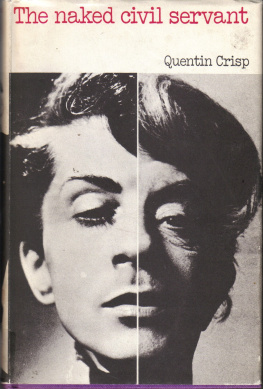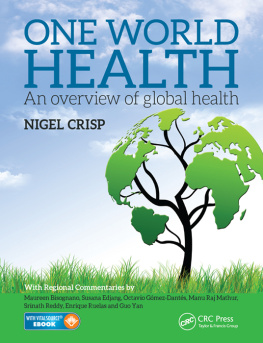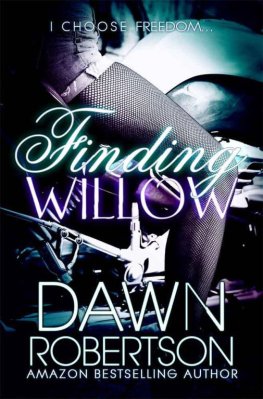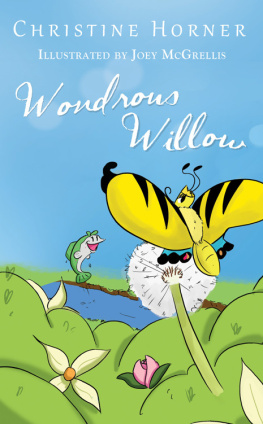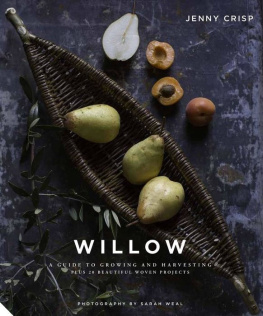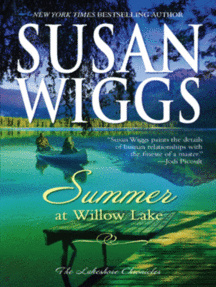Crisp - Willow
Here you can read online Crisp - Willow full text of the book (entire story) in english for free. Download pdf and epub, get meaning, cover and reviews about this ebook. year: 2018, publisher: Frances Lincoln, genre: Home and family. Description of the work, (preface) as well as reviews are available. Best literature library LitArk.com created for fans of good reading and offers a wide selection of genres:
Romance novel
Science fiction
Adventure
Detective
Science
History
Home and family
Prose
Art
Politics
Computer
Non-fiction
Religion
Business
Children
Humor
Choose a favorite category and find really read worthwhile books. Enjoy immersion in the world of imagination, feel the emotions of the characters or learn something new for yourself, make an fascinating discovery.

- Book:Willow
- Author:
- Publisher:Frances Lincoln
- Genre:
- Year:2018
- Rating:5 / 5
- Favourites:Add to favourites
- Your mark:
- 100
- 1
- 2
- 3
- 4
- 5
Willow: summary, description and annotation
We offer to read an annotation, description, summary or preface (depends on what the author of the book "Willow" wrote himself). If you haven't found the necessary information about the book — write in the comments, we will try to find it.
Willow — read online for free the complete book (whole text) full work
Below is the text of the book, divided by pages. System saving the place of the last page read, allows you to conveniently read the book "Willow" online for free, without having to search again every time where you left off. Put a bookmark, and you can go to the page where you finished reading at any time.
Font size:
Interval:
Bookmark:


A GUIDE TO GROWING AND HARVESTING
PLUS 20 BEAUTIFUL WOVEN PROJECTS
JENNY CRISP
PHOTOGRAPHY BY SARAH WEAL

Basket making is one of the oldest crafts known to man. Currently, we can date some found pieces as far back as Mesolithic times. For thousands of years, every community across the world has woven their indigenous materials into dwellings, means of transportation, functional objects for use in the home and garden and even into clothing and jewellery. Grasses were woven into shoes, cloaks or carpets, while branches of small trees were woven into boxes, boats or houses. The knowledge and understanding of these materials would have created an unquestionable symbiosis with nature and the environment. Survival depended on this deep-rooted knowledge.
Very little changed until the 20th century. In most communities, rural and urban, there would have been an area of land close by that was used to grow willow. Really, it wasnt until the 1960s, with the explosion of man-made materials and cheap international transportation, that the growing of willow and the basket making industry came under threat. The links between growing, harvesting and making with willow would until then have been common to many people, but it took only one generation for us to lose these connections. This way of life was no longer familiar or instinctive; we had become separate from it.
Today, little has changed in the processes of cultivating and manufacturing objects in willow. Unlike other crafts, such as weaving fabric, potting, woodworking and blacksmithing, basket making has escaped the developments of the industrial revolution.
There are many types of willow suitable for basket making and they grow into as many different dimensions, densities, colours and textures. They each have their own particular quality, which, in turn, dictates how they are used. We havent yet been able to invent a machine that can make a basket, because we cannot standardize what mother nature produces. Fortunately, we cannot force willow to grow into a uniform material that works with the precise needs of mechanization. For this reason, willow weaving is a craft that resists the forces and developments of modern life. The tools and workshops in the basket-making world today have changed little over time if we could walk into a basket makers workshop in 16th-century London, we would find very little difference in the method of production from the processes I use in my workshop today.
In the 21st century we are trying to reconnect with nature by choice, and not by necessity. We have moved from wanting to keep nature out of our daily lives to seeking to include it. Our mechanized and digital lives have become so separated from our surroundings that some people seek a personal dialogue with nature and their environment in one way or another. Many of us aspire to question and to re-engage with a knowledge and understanding of our materials, with the hope that we can tap into an ancient and cultural memory that once existed. A hero of mine, the environmental sculptor Andy Goldsworthy, stands as a testament to this. He gathers and reorders nature, with very few tools, to create breathtaking natural compositions that he hopes reminds us of this lost connection.

A variety of basket-making willows, cut in January, sorted and drying naturally in the sunshine.
THERE ARE MANY, MANY DIFFERENT WAYS OF WEAVING A BASKET WITH WILLOW. WORLDWIDE THERE ARE AS MANY VARIATIONS OF TECHNIQUES AS THERE ARE TYPES OF WILLOW. OVER THE CENTURIES DIFFERENT CULTURES HAVE BEEN INCREDIBLY INGENIOUS IN THE WAYS IN WHICH THEY HAVE INTERPRETED THIS REMARKABLE MATERIAL TO MAKE THEIR BASKETS.

I have been a professional willow grower and basket maker for more than 30 years. I have set out to earn a living making functional baskets from homegrown materials, and to practise using the inherent nature of those materials to the best of my knowledge, ability and experience. My aim is to be innovative while retaining a respect for the old patterns and traditions of this craft.
In 1985 I completed a BA (Hons) in woven textiles at West Surrey College of Art and Design and I left qualified to weave fabric for upholstery. For my thesis I decided I would research the use of willow for basket making, thinking I might combine this with the practical side of the course. During the research I came across a couple who, unbeknown to me, would have a fundamental impact on my career choice and way of life.
Judy and David Drew lived in a beautiful Somerset cob house that they had sympathetically renovated. They lived about as far from digital and industrial development as was possible in 20th-century Britain. They were almost self-sufficient in food and willow. David was a full-time willow grower and basket maker, with an expert knowledge and understanding of his environment and all that it could provide. I was hooked. Growing up with practical parents, a love of the outdoors and a lot of energy, I had found the life for me. Sponsored by the Crafts Council, I was fortunate to spend one year apprenticed to David. We worked together on and off for the following five years.
So, for three decades now I have grown willow and made baskets. I have been lucky enough to work with the seasons and out in the elements, growing a material that keeps me connected to nature and my environment. To master the use of willow you must first understand its characteristics and qualities. A perfect basket depends on the makers empathy with the material and tools, on repetition and experience, combined with the intention in the makers mind. This practice requires slow and steady observation; repetition allows for mindful development in understanding the material. My working life gives me a questioning, rudimentary symbiosis with nature and the environment, and I will always feel privileged to be in this position.
Many years ago it was common for a basket maker to serve an apprenticeship lasting anywhere between three and five years. This meant that he or she would have enough experience and knowledge of materials, tools and products to be able to perform the craft to a high standard with speed and efficiency in order to make strong baskets and to earn a living. Sadly, today its unusual to find opportunities for apprenticeships. This knowledge is still valued, but it is hard to find other than through books or weekend courses.
I hope the information and advice included in this book, along with the range of projects chosen, will enable you to share the essence of making an object from a natural material, and that you will have the opportunity to experience the delightful fulfilment that growing willow and basket making can bring.

Font size:
Interval:
Bookmark:
Similar books «Willow»
Look at similar books to Willow. We have selected literature similar in name and meaning in the hope of providing readers with more options to find new, interesting, not yet read works.
Discussion, reviews of the book Willow and just readers' own opinions. Leave your comments, write what you think about the work, its meaning or the main characters. Specify what exactly you liked and what you didn't like, and why you think so.

